Can You Die from Anemia?
Low iron levels in the body can cause more harm to the body than one can imagine. Iron is an important mineral in the body that helps in the production of hemoglobin. Hemoglobin in the blood delivers oxygen and hence one cannot leave an iron deficiency untreated.
Deficiency of iron leads to a medical condition called anemia. According to a recent research carried out the World Health Organization, the reason for the increase in the death rates is iron deficiency. A severe form of anemia can result in death.
According to WHO, anemia is a silent killer as its symptoms are more subtle than other nutritional deficiencies. Ill health, premature death and other major health conditions are directly linked to iron deficiency.
What is anemia?
In this medical condition, there are very few red blood cells that can function properly or carry enough oxygen to the body. There can be many different causes of anemia and it has to be treated depending on the cause. Many of these treatments include blood transfusions, medications, dietary changes and supplements.
Anemia is a not a disease but a condition which is a sign that the body is deficient of enough red blood cells. Either there are not enough red blood cells or the protein hemoglobin is quite less which help in supplying oxygen to the body.
Poor nutrition, deep wounds, blood loss, destruction of red blood cells or genetically abnormal hemoglobin, all result in anemia. Whatever may be the reason for anemia, it always results in the blood not able to carry enough oxygen throughout the body. The body fails to function properly.
Sickle-cell anemia
Sickle cell anemia is a condition in which the body produces red blood cells which are abnormally shaped. They look like crescent or sickle and hence named as sickle cell anemia. They are short lived and do not have a long life span as that of normal, round red blood cells. They lead to anemia. Due to their sickle shape, they often get stuck in the blood vessels obstructing the blood flow. This often leads to organ damage or severe pain.
Sickle-cell anemia is caused due to a genetic problem. People who inherit this condition are born with two genes, each inherited from each parent. A single inherited sickle cell gene leads to a condition called the sickle cell trait. This condition affects at least 1 out of 12 African Americans. There are no available cures for sickle-cell anemia as they are a genetic condition. Thought the treatments available help to lessen the complications and relieve the symptoms.
Inheritance of sickle cell anemia
Every individual gets 2 copies of hemoglobin genes one from their mother and the other from their father. When the zygote forms, only one of these 2 genes enters it. Every cell in the body of the new baby has 2 hemoglobin genes one from the mother and the other from the father.
This is a recessive condition in which there should be 2 copies of sickle cell hemoglobin. If only one copy of the sickle cell gene is present in your blood then the condition is called sickle cell trait which does not give you the condition but the possibility of passing it to your children increases. If your partner also has a single sickle cell gene then the possibility of giving it to your children increases.
Treatment for sickle-cell anemia
The only cure present for sickle-cell anemia currently is bone marrow or stem cell transplant. This has to be done only by a matching donor with the similar bone marrow. Other treatments only offer some relief from the symptoms like blood transfusions, medications and vaccinations to prevent infections.
Can you die from sickle-cell anemia?
In sickle-cell anemia, sometimes an Acute chest syndrome occurs when the lungs get deprived of oxygen. During such a crisis, a very painful, dangerous or life threatening condition occurs leading to death sometimes. Sickle cell anemia may lead to ACS which may lead to death.
Until recently, all those who had sickle-cell anemia could live up to 14 years only on an average. But currently, the life expectancy has increased to 50 years and sometimes more. Women generally live longer than men with sickle cell anemia.
Researchers from the Boston University of Medicine have come up with a mathematical calculation to predict whether you can die from sickle-cell anemia. They found that a total of seven variables were used to determine the risk of death from sickle-cell anemia. They are age of the patient, sex, episodes of severe pain, blood pressure and stroke. This calculation does not only help in predicting the risk factors but also gives new medical insights in to the disease.
Based on the individual patient profile, the researchers constructed an easy scoring system to estimate the chances of death in the coming 5 years. This scoring system or the Sickle cell disease severity calculator requires one to enter information on the 7 variables and then a computer algorithm follows calculating the factors and returning with a number between 0 to 1 estimating the probability of death. This also helps in determining the therapeutic decisions to be made to treat the condition.
Symptoms of anemia
A slight iron deficiency makes person feel weak or lethargic but major physical symptoms of anemia do not show up until severe deficiency of iron.
Symptoms of anemia are listed below:
- Tiredness
- Weakness
- Compromised immune function
- Low cognitive performance
- Headaches
- Shortness of breath
- Brittle nails and hair
- Pale appearance or yellowy appearance of the skin
- Feeling cold
- Rapid heartbeat.
Who is more likely to get anemia?
Listed below can be considered as high risk groups of anemia:
- Premenopausal women
- Lactating mothers
- Women with peptic ulcer disease
- Vegans or vegetarians
- Women who have given birth recently
- Children who have more than 2 to 3 cups of cow’s milk every day because cow’s milk decreases iron absorption.
- Individuals who have ulcerative colitis
- Individual with Crohn’s disease
- Individuals with celiac disease.
- Individuals who have a physical trauma
- Individuals who have undergone a major surgery.
Prevention
Iron deficiency should be checked at its initial stages and should not be left untreated. It is one of the major causes of death in under-developed countries. One needs to consume iron rich foods like white beans, clams, organ meats, oysters, soybeans, spinach, lentils, beef, kidney beans, fortified cereals and other such iron rich food. Having food rich in vitamin C along with iron rich food helps in better absorption of the iron. Foods rich in vitamin C such as bell peppers, guava, citrus fruits, strawberries, kiwi and broccoli help in better iron absorption in the body.
How to the blood cells act in an anemic person?
While producing blood, a complex process happens in the body wherein the bone marrow, spleen, kidneys and other parts communicate with each other. Anything goes wrong in this complex process can result in anemia.
Problems like replication and maturation of erythrocytes, problems with stem cells, improper signaling between kidneys and bone marrow, manufacture of hemoglobin, problems with spleen function and destruction of cells by macrophages can all result in anemia. Anemia can also occur due to some genetic or inherited blood disorder, an acquired blood condition or also because of some conditions or diseases indirectly related to blood.
When a person is tested for anemia, doctors try to diagnose the underlying cause for anemia in order to treat it effectively. The doctors describe the blood by the hemoglobin count and also by the shape and size of the red blood cells. Treatment varies in each type of anemia and is dependent on the underlying reason for anemia.
Diagnosis
Anemia can be diagnosed after a much later stage. People who are slightly anemic generally brush off the condition thinking that they must be tired. People who have severe anemia might have different complications depending on their age, how fast the anemia developed and also other illness that they may have.
A rapidly shot up anemia is generally easier to diagnose by the individual than a gradually increasing one. Such people feel dizzy, tired and fatigued because the cells in their body are not getting enough quantities of oxygen. They may also feel constantly irritable and lose interest in their surroundings. Such people often look pale or yellowy due to destruction of the red blood cells. Menstruating women experience irregularities in their menstruation periods due to anemia.
Eat right to prevent anemia
One can prevent or cure anemia by eating right. A healthy diet for anemia should have sufficient quantities of vitamin B12 found in fish, dairy products and meat, folic acid found in meat, eggs, dark green leafy vegetables, orange juice, whole grain cereals and iron found in livers, egg yolks, molasses, kale, beef, collards, turnip greens, dried fruit, peas, beans spinach, wheat germ iron-fortified cereals and whole grains.


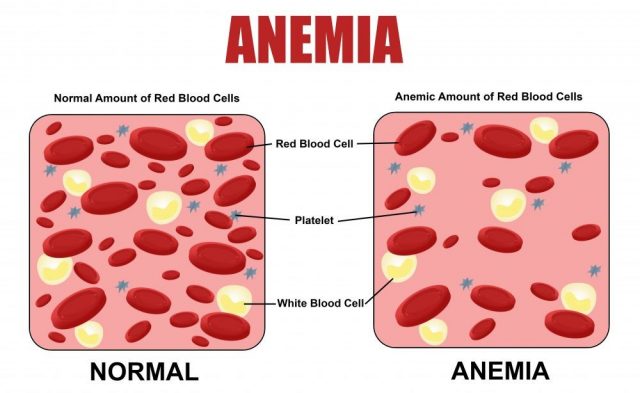
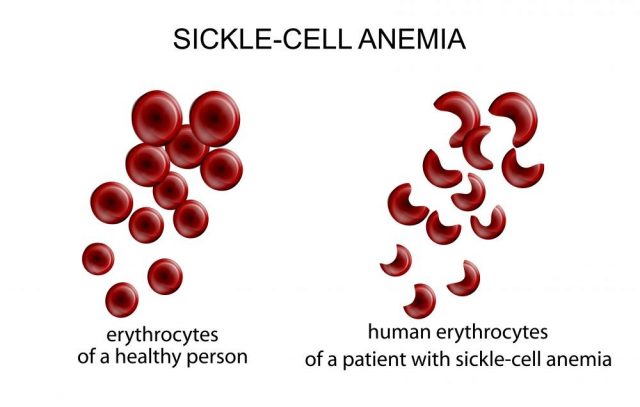
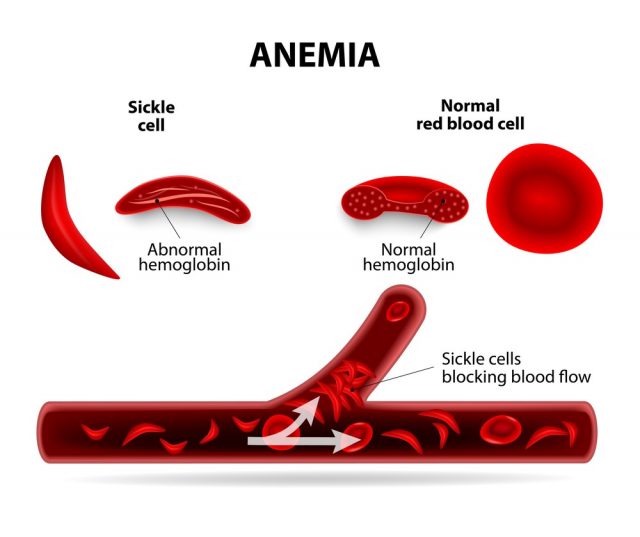
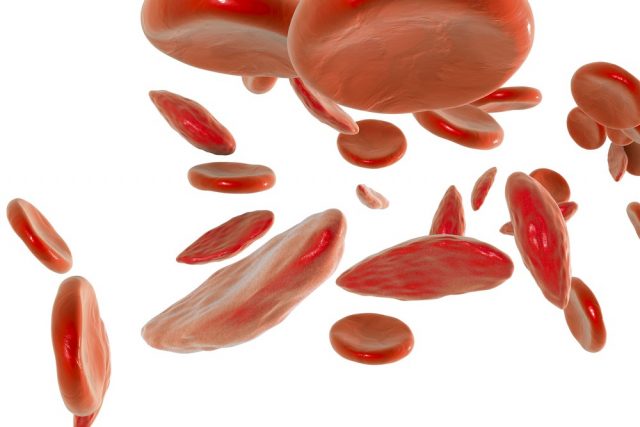
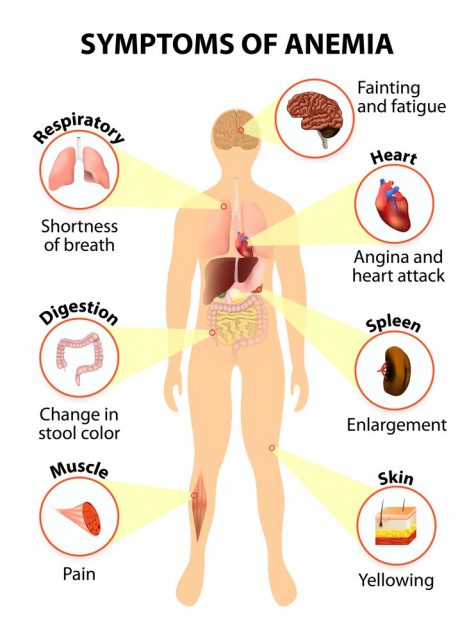
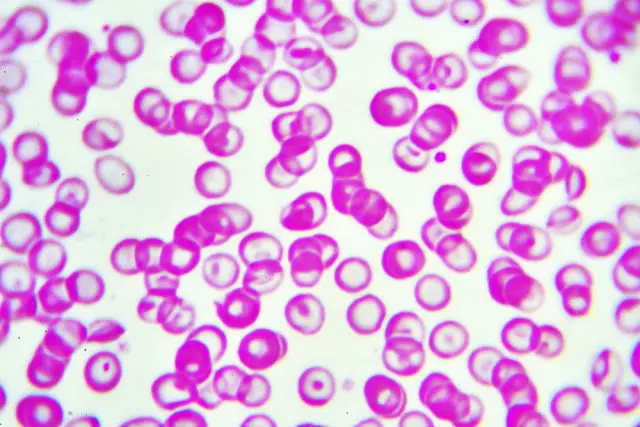

Laurel Hansen
My husband has Lewy Body Dementia and is the end stages of the disease. He also has extreme iron deficiency anemia due to blood loss somewhere in his digestive system. His doctor has put him on Hospice care which means they will not treat his anemia. Will he die from the anemia and if so what will happen to cause his death? He is already very tired, dizzy, has shortness of breath and heart palpitations.